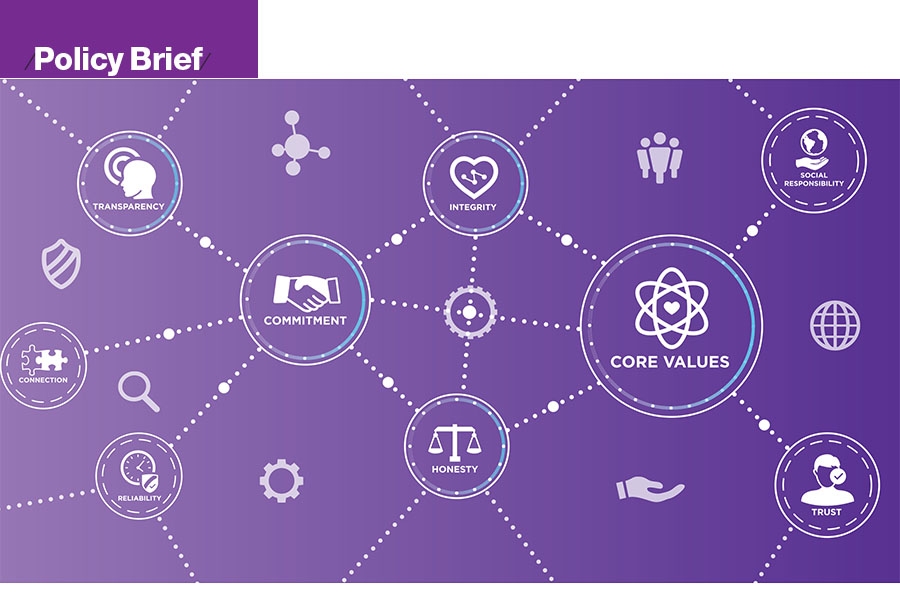Why it is good business to pull back the curtain and publicly share your company’s financials, policies and practices, and staff demographics.
There are a lot of companies today that talk about giving back and supporting the community. I guess that is nice. But talk is cheap.
While it is always a good move to support community nonprofits, actually using your company as a force for good goes far beyond just writing checks. It goes beyond adding inspiring copywriting and marketing pages on your website.
A business existing as a force for good requires an overarching philosophy and a deep purpose that impacts day-to-day operations in every imaginable way, informing every nook and cranny inside of the business.
If you work at a community-minded company that gives back, please ask yourself this question: Is every conversation and every decision made through a lens of purpose and strong values? Would you be proud to pull back the curtain and publicly share your company’s financials, policies and practices, staff demographics and leadership makeup?
The truth is, it is hard to know what is real and what is not. It is hard to know who is sincere in using a company as a force for good and who is using trendy community copywriting to boost their brand. The only real way to know who is fronting and who is real is with transparency.
Transparency gives everyone, both internally and externally, a clear line of sight through an organization with objective measurements and tangible context to help understand what is really going on behind the scenes.
Transparency reaches beyond marketing pages and inspiring social media posts to show what an organization and its leadership are truly up to. Transparency serves as a litmus test for seeing if a company’s purpose, values and all of the creative copy on the website are true.
In January 2021, my team made our first attempt at an annual transparency report. It is our method for pulling back the curtain and showing everyone who we are, what we care about and what we stand for. It also very publicly shows where our shortcomings are and where we need to improve. It is all there, warts and all.
A transparency report is an opportunity for a company to share objective, measurable data points across an organization. It also serves as a baseline or benchmark for future work and progress to be made.
Public-facing transparency reports are also helpful for other leaders and outside organizations, so they may better understand their own performance among their community and peers.
Inside an organization, a transparency report gives leaders, staff and future employees insights to help them better understand the true values, character and integrity of the business and the people running it.
It sparks meaningful internal conversations and helps lead accountability and collaborative work among leaders and staff toward future progress.
My hope in publishing an annual transparency report is for it to serve as an open signal, reaching out into the community, and to serve as a call to our friends, competitors, collaborative partners and clients, the business community, and anyone out there who cares about using business for more than just profits.
Transparency provides a springboard to change and impact.
Amid today’s rapidly evolving societal landscape, now is the time for business leaders to consider using for-profit companies to impact the greater good. Rather than wait for the government or the next grassroots revolution to spark change, what if the business community led the way?
Let us consider the impact if Amazon, Apple and Google all became purpose-driven companies.
If each of these companies gave 10% of their 2020 profits to community organizations and causes, that would be $11.8 billion for one year. As a point of reference, Bill and Melinda Gates, founders of one of the most well-funded and most impactful philanthropic organizations, gave $589 million in 2019.
Now imagine if all Amazon, Apple and Google employees were required to spend two paid days a year volunteering at community organizations and nonprofits. That would be $3.16 million in volunteer hours. Imagine if all of these employees were educated on topics like diversity, equity and inclusion.
Five hours of training in a year translates to nearly 8 million hours across these three companies. Imagine the impact of 1.58 million people receiving five hours of diversity, equity and inclusion training.
Now, to go a step further, let us consider if all these global companies committed to pay equity, paid parental leave and reaching 50% workplace diversity (race, gender, LBGTQIA). And imagine if all of these companies achieved B-Corp certification too — meaning they met the highest standards of verified social and environmental performance, transparency and accountability. Clearly, I am dreaming out loud here, but why not?
This is a call and a challenge for all my friends, competitors and community partners in the business world. We may not be Amazon, Apple and Google, but we are nimble enough to actually make this change happen.
Let us push past the novelty of businesses giving back as a cute tagline. Let us use our organizations as a force for good, where every aspect of our companies can be published as case studies for amplifying and executing community impact.
It all starts with transparency. Who is in?
Ryan Wines is the founder and CEO of Marmoset, a music agency.
To subscribe to Oregon Business, click here.







